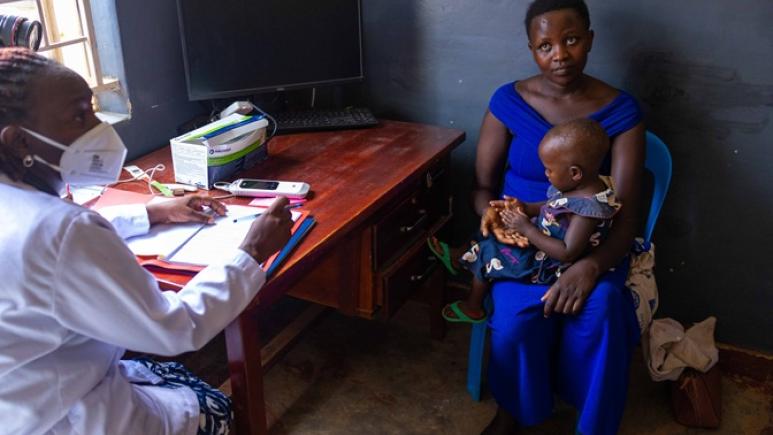WHO treatment decision algorithms double pediatric TB diagnoses and treatments
In 2022, WHO revised its guidance for the diagnosis, treatment and prevention in children management of TB in children to be in line with the most recent scientific evidence. One of the major changes is the use of two treatment decision algorithms (TDAs): these enable early detection of tuberculosis in children under 10 years of age with signs suggestive of pulmonary tuberculosis and rapid initiation of treatment. These algorithms take the form of a flowchart with steps to be followed by the clinician and a scoring system that assigns points based on symptoms (e.g., cough, fever, night sweats, weight loss) and radiographic findings (where available). They enable physicians to initiate treatment as soon as a certain threshold is reached—even in the absence of available laboratory tests or in cases of negative results. Other WHO recommendations include shorter treatment for non-severe forms in children and treatment to prevent tuberculosis in family contacts.
TACTiC: changing the game for TB in children
The Test, Avoid, Cure TB in Children (TACTiC) project, launched at the end of 2023 by Médecins Sans Frontières (MSF), plans to implement these recommendations in 12 countries in Africa and Asia. In addition to implementation, the project includes an advocacy component and an operational research component. As part of the TACTiC project, the “TB ALGO PED” study conducted by Epicentre evaluated these therapeutic decision algorithms in 1,846 children under 10 years with symptoms suggestive of pulmonary TB between August 2023 and October 2025 across five countries: Uganda, Niger, Nigeria, Guinea and South Sudan, including children facing severe acute malnutrition and children living with HIV. The data showed that the WHO algorithms identified the majority of children with TB correctly and, on average, doubled the proportion of children that can be initiated on TB treatment. The findings further showed that the introduction of the WHO algorithms not only supports health care workers in the diagnosis of TB in children and are feasible to use but also increases parents’ satisfaction with timely TB care their children received.
"Before, health workers relied on coughing, and as long as children weren't coughing, they thought they didn't have tuberculosis.” said Dr. Angeline Dore, focal point for the TACTiC project in Guinea. “The WHO algorithms now tell us not to rely on coughing, there are other signs for TB as well."
An estimated 1.2 million children and young adolescents under the age of 15 years fell ill with TB in 2024. Although the disease can be cured, TB in children often remains undiagnosed as the currently available laboratory tests are designed for adults and do not work sufficiently well in children. In addition, most laboratory tests require a sputum sample which children struggle to produce, and even when they do, the low bacterial levels in their lungs often make detection by laboratory tests impossible. The WHO Global Tuberculosis Report published in November 2025 showed that a staggering 43% of the children with TB missed diagnosis in 2024 and could not access life-saving treatment.
Despite being recommended by the WHO, many countries have not yet adopted these algorithms in their national guidelines nor facilitated their implementation in healthcare facilities.
“Too many children with TB are still slipping through the cracks in the absence of effective diagnostic tools” said Dr Helena Huerga, Principal Investigator of the TACTiC research study conducted by MSF. “Our findings prove that WHO’s treatment decision algorithms, for which we do not need lab test results to initiate TB treatment in children, work in real-world settings and can potentially save many more children’s lives if implemented. The science is clear - what’s now missing is the political will to put it into practice.”
With the recent global aid funding cuts that threaten to widen gaps in identifying and treating people with TB, MSF called on countries and their stakeholders, including international donors, to step up and ensure sustained funding for TB care for all, especially young children as they already face the largest gaps in accessing TB care.
“In addition to timely adoption and implementation of the WHO algorithms, policymakers, donors and implementers must also anticipate and plan for an increase in supply of medicines needed to treat children to ensure that all children who are diagnosed with TB can access TB treatment without any delay,” said Daniel Martinez Garcia, project leader of MSF’s TACTiC project.
© Stuart Tibaweswa









